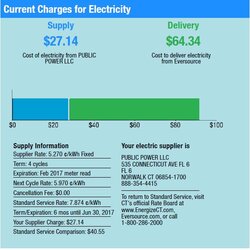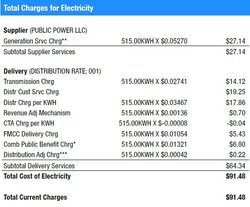iamlucky13
Minister of Fire
After seeing your reply I was curios so I did a search for plasma power consumption from 9/2016 to present day. One tv I found the specs on is a Panasonic 61" model VT60. I'm not sure but I remember hearing that Panasonic was the last maker of plasmas sets? Here are the ratings listed:
- Power SupplyAC 120 V, 60 Hz
- Screen Size Diagonal (inches)60.1
- On mode Average Power Consumption169 W
- Rated Power Consumption472 W
- Standby Power Consumption0.2 W
I have no idea what the difference is between the on mode average power consumption and the rated power consumption is? Anyone?
Average is the number to use for operating cost estimates.
Rated is the number to use to make sure you don't overload your wiring, assuming you even bother to check (those with too many outlets on a circuit, like my house, or else with a very high end sound system might want to). The TV should never draw more than that.
UL labels will list the rated power consumption. Most manufacturers don't bother to give average power consumption in any of their specs, although if it's Energy Star rated, they will have measured the average under the Energy Star test conditions, and you can figure it out from the Energy Guide label provided with the appliance. For mine, they say 205 kWh per year, at 5 hours use per day (wow...we average maybe 1 hour/day), which works out to 112 W.
I think you're correct that Panasonic was the last plasma holdout. Now the focus for absolute best picture quality is on OLED screens. Mid-grade LCD's are good enough for almost all buyers who aren't willing to pay top dollar for OLED screens.




 You have good reason to be angry. I'm at a loss to what you can do about it though.
You have good reason to be angry. I'm at a loss to what you can do about it though.